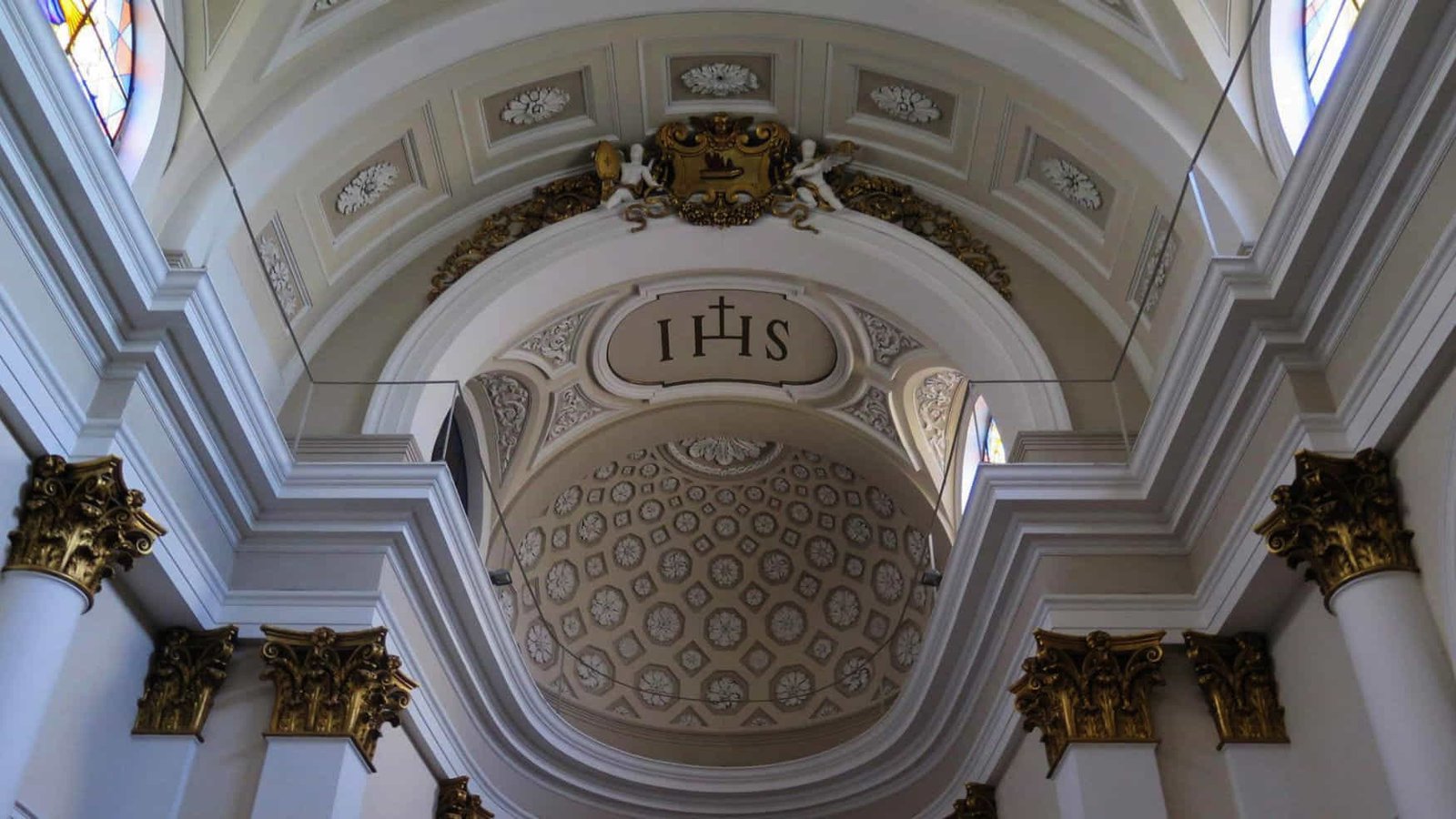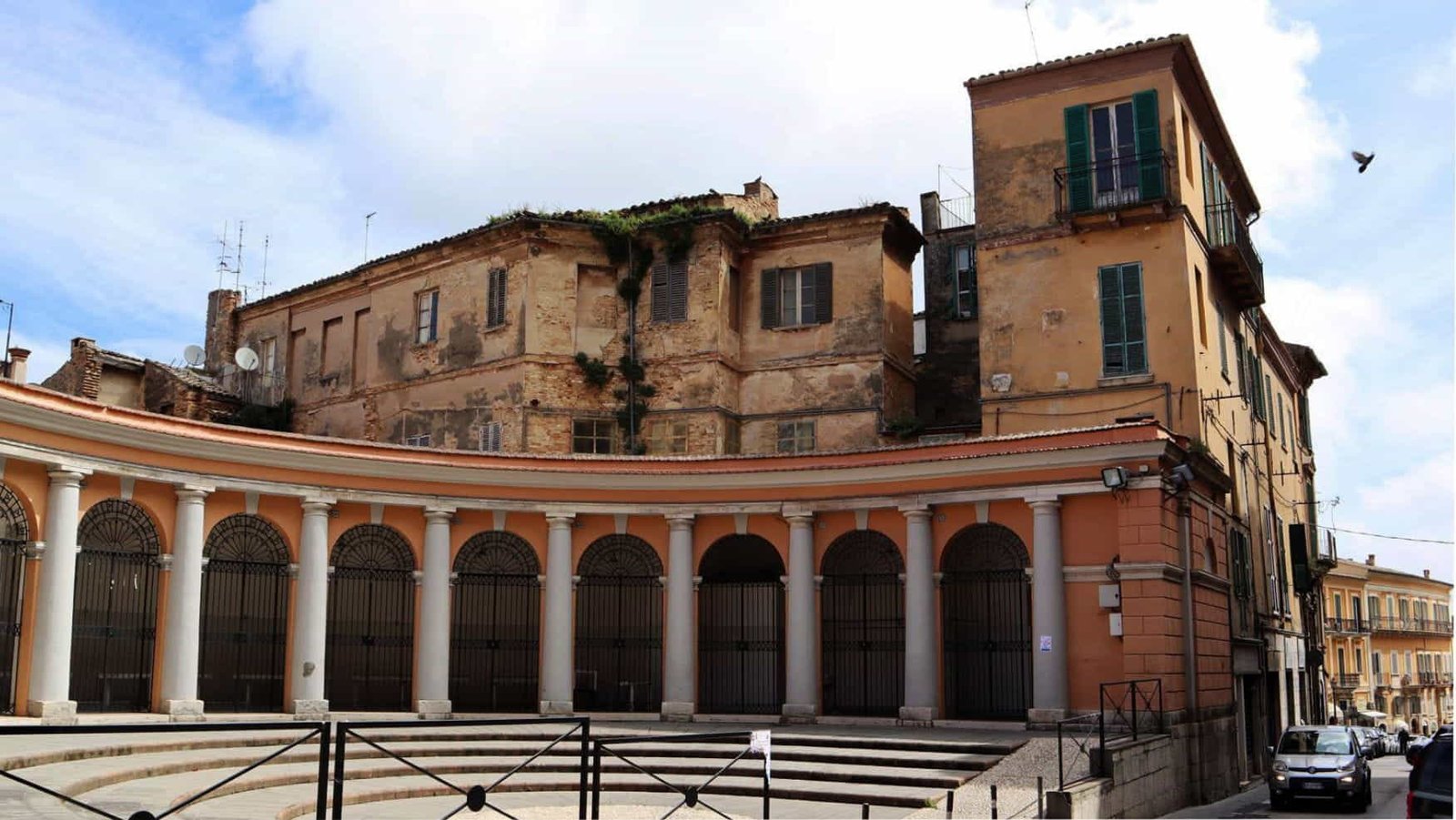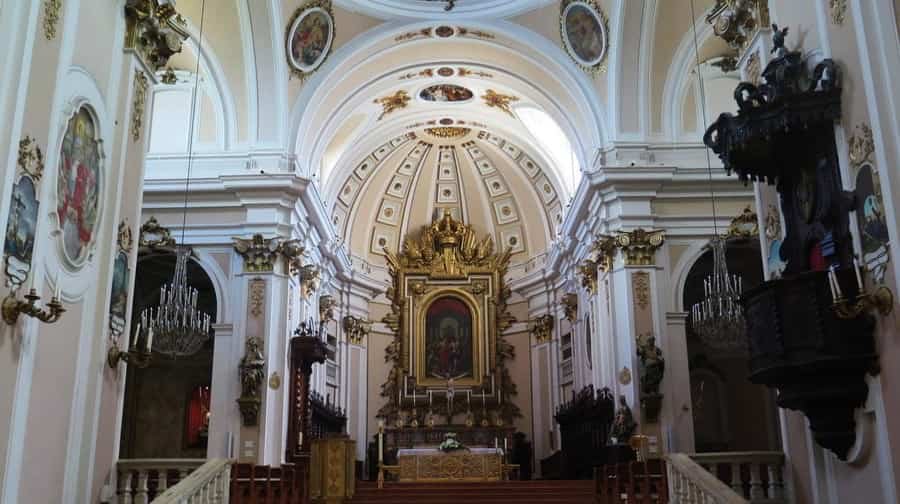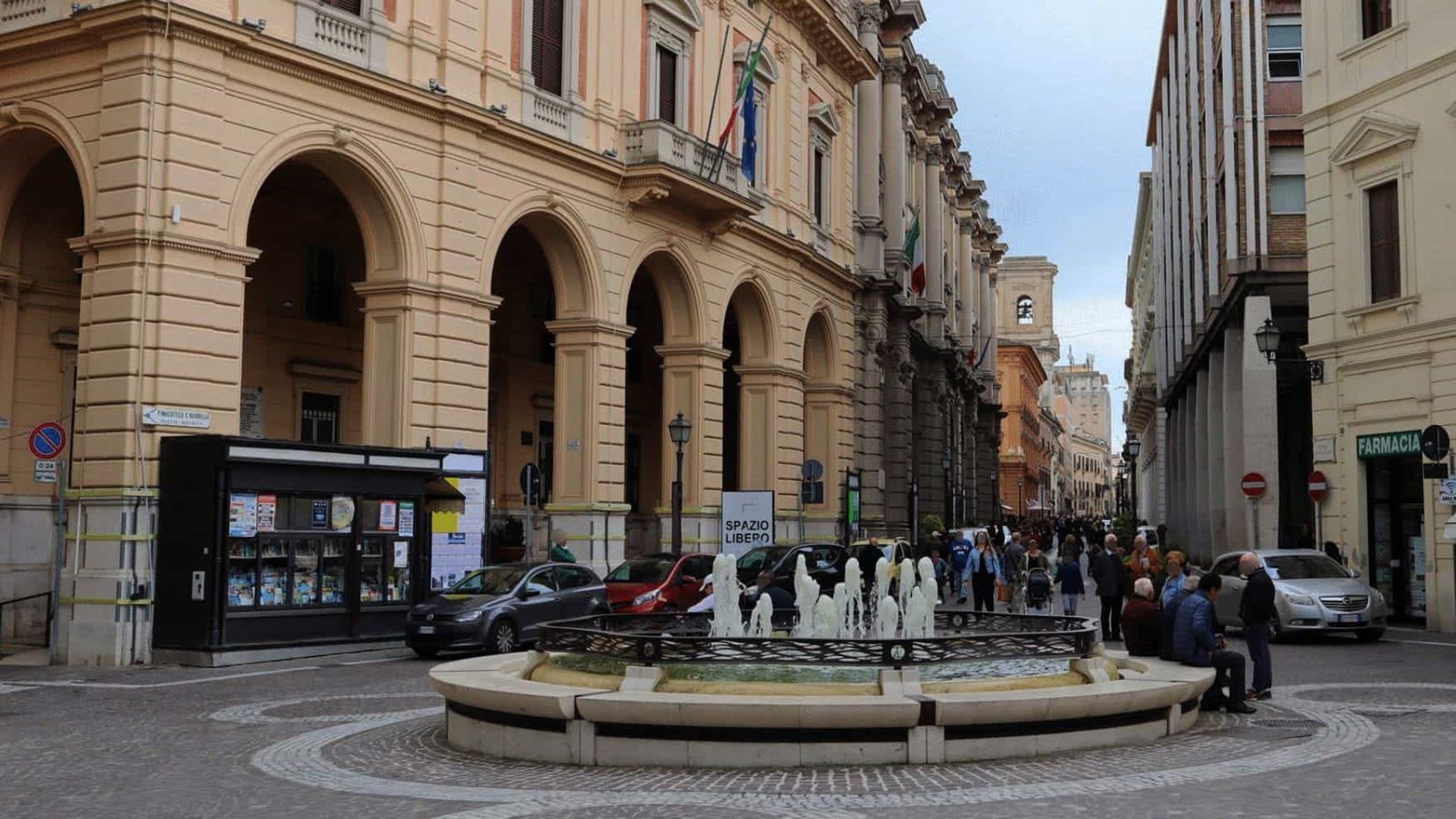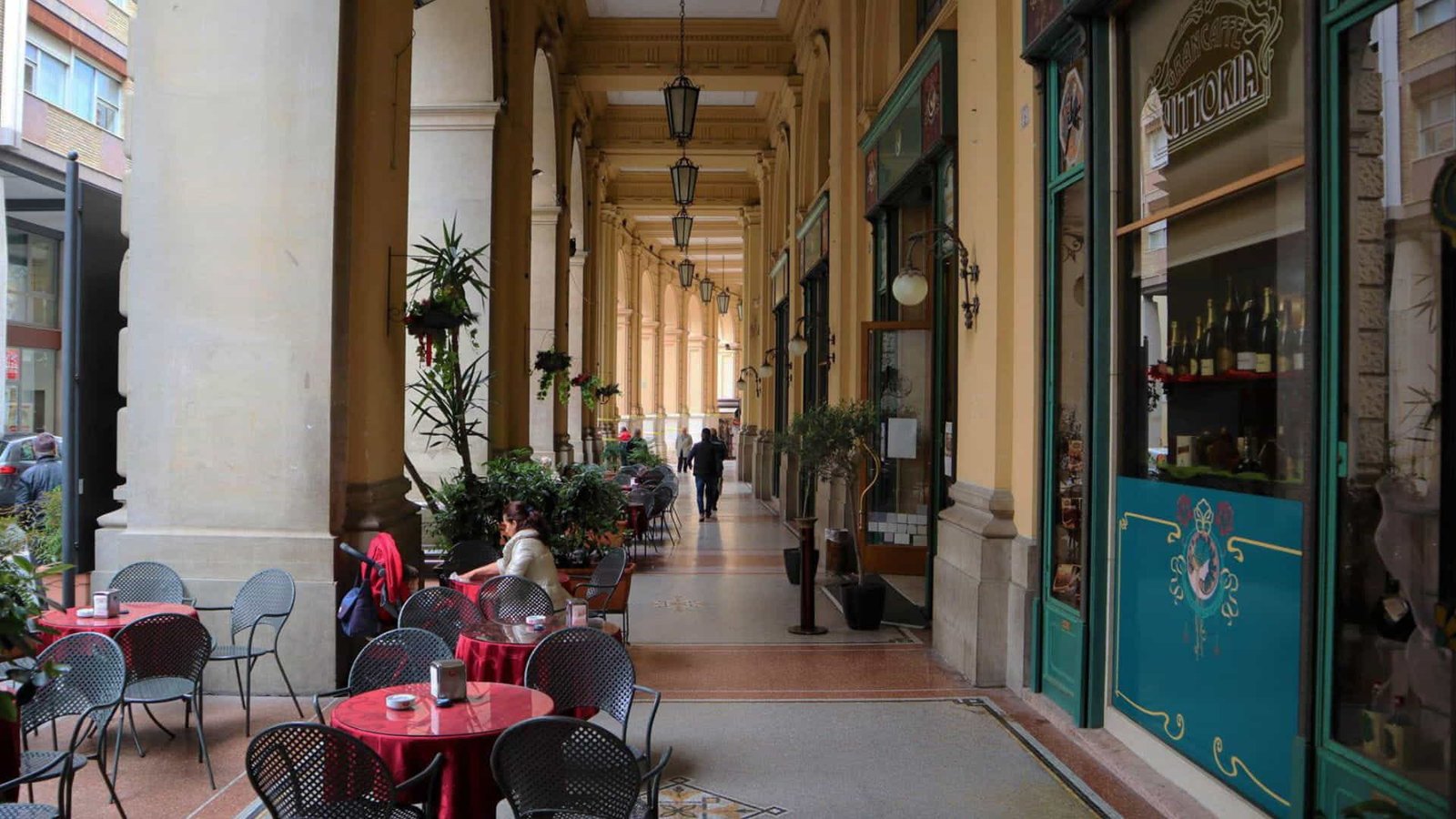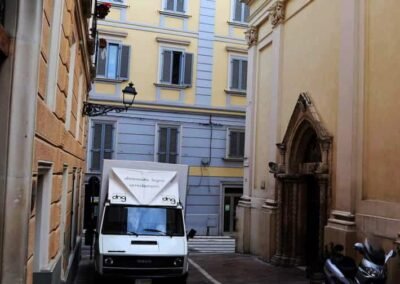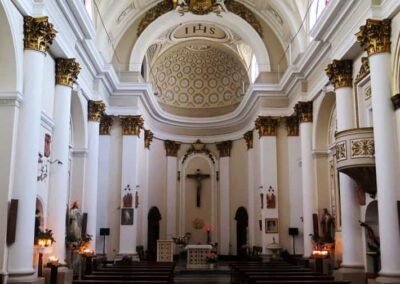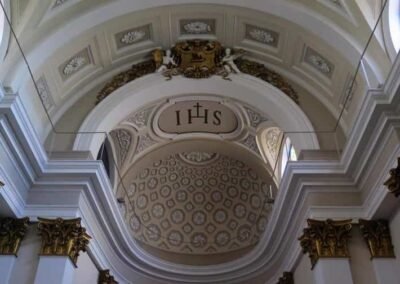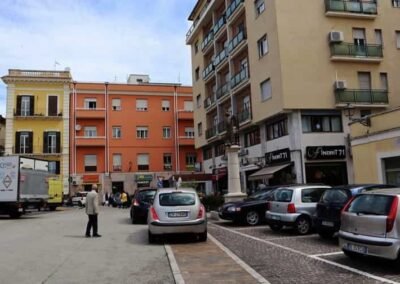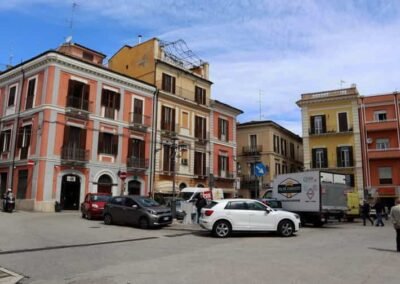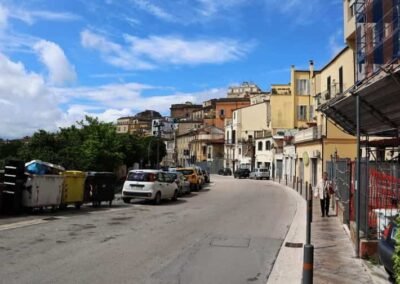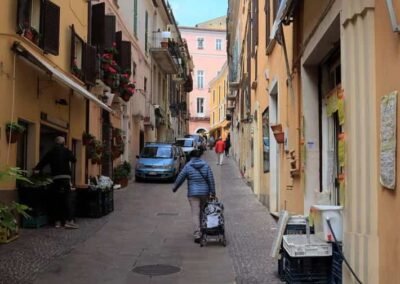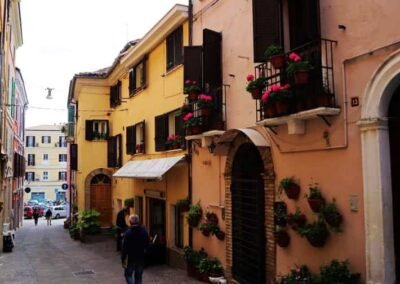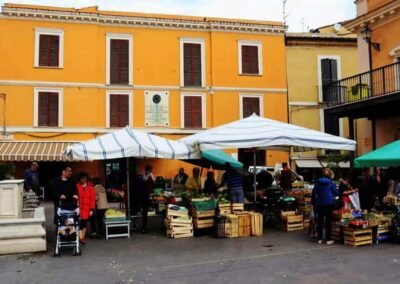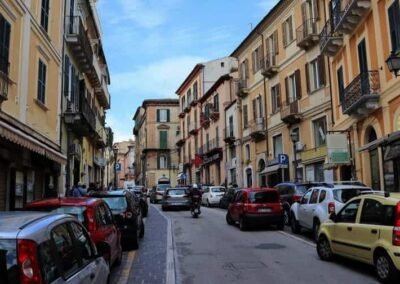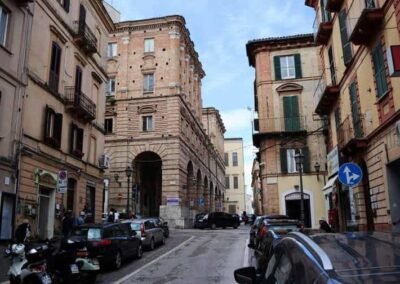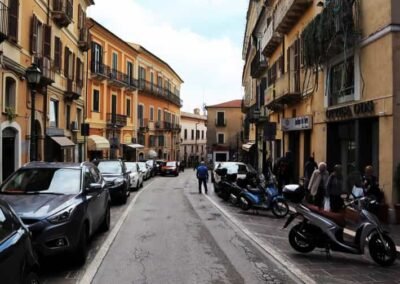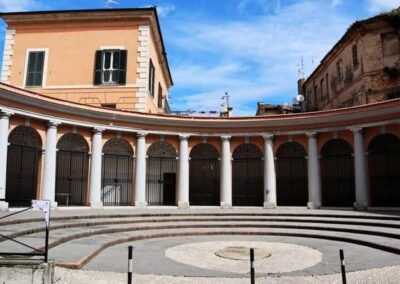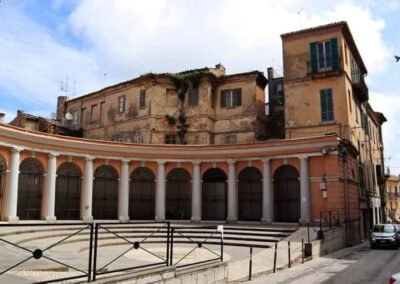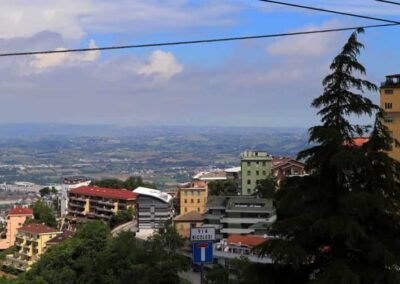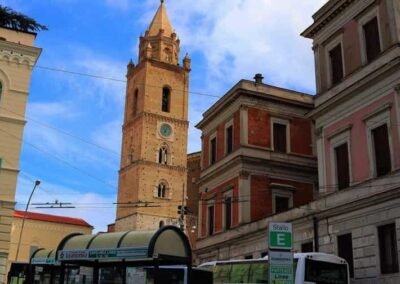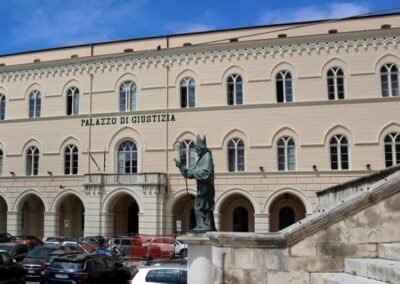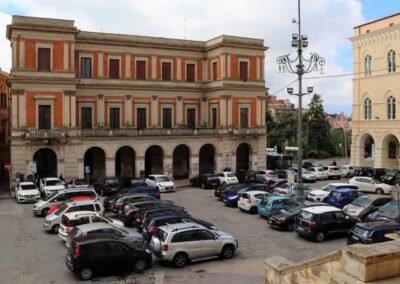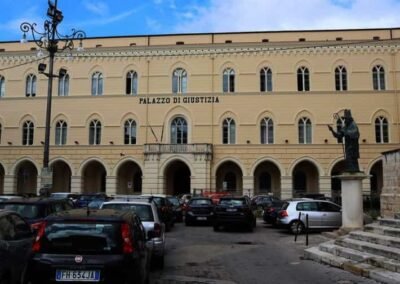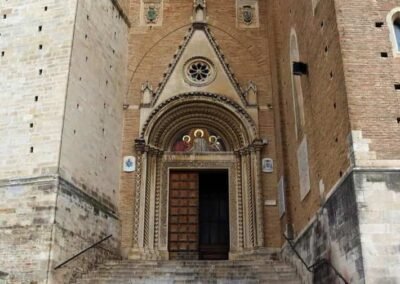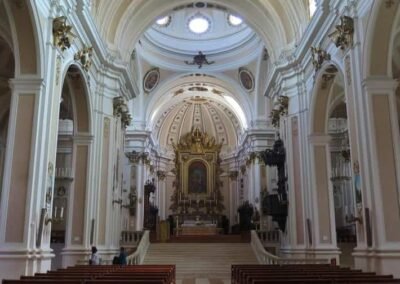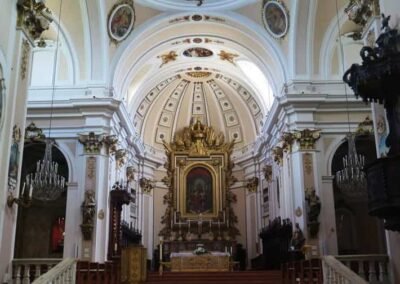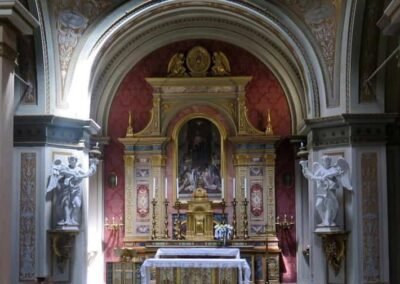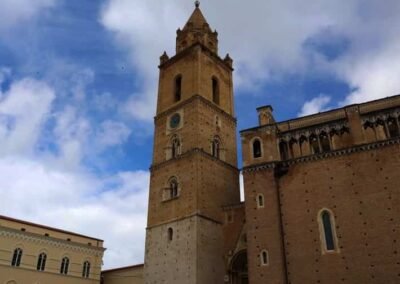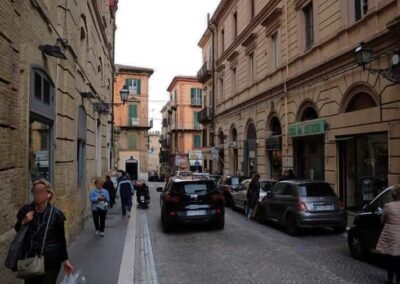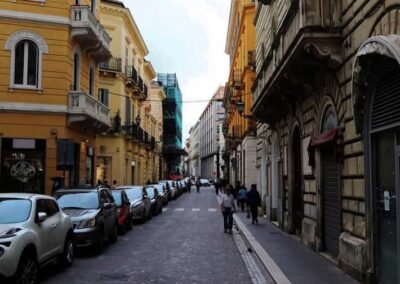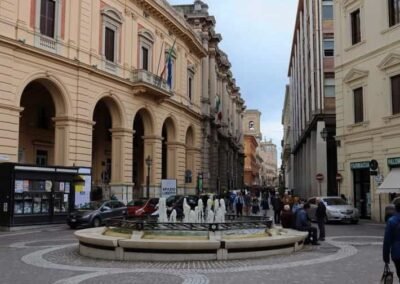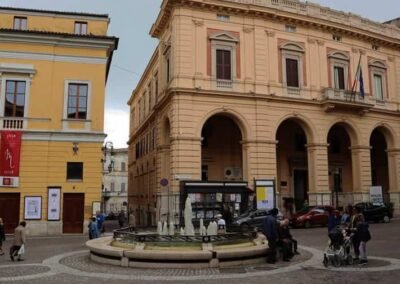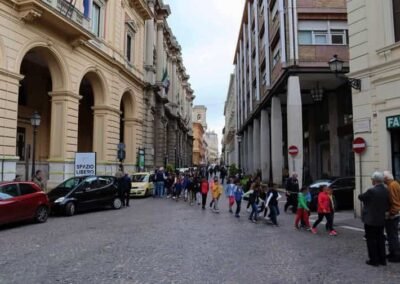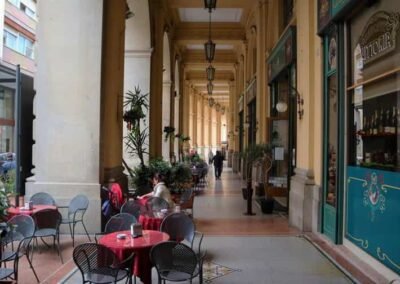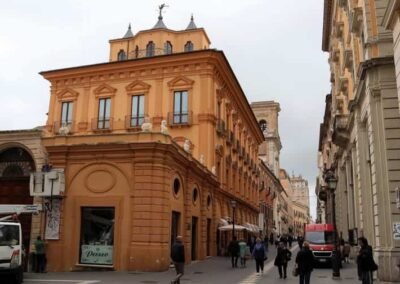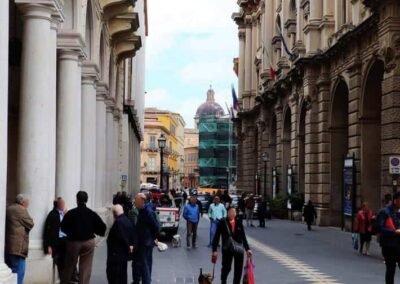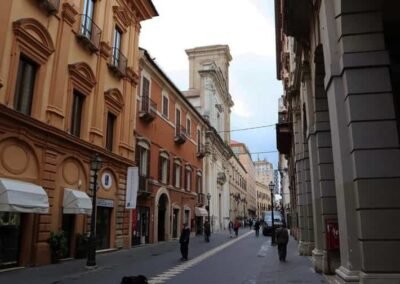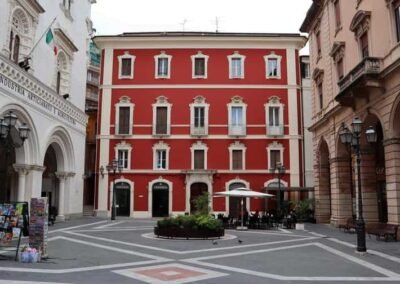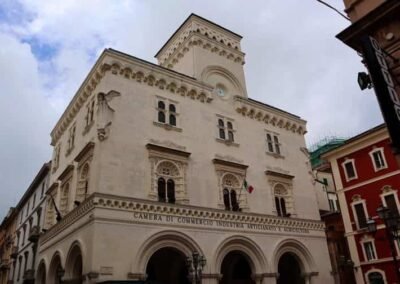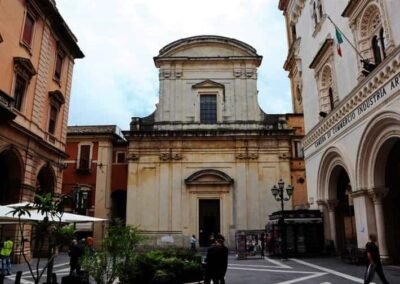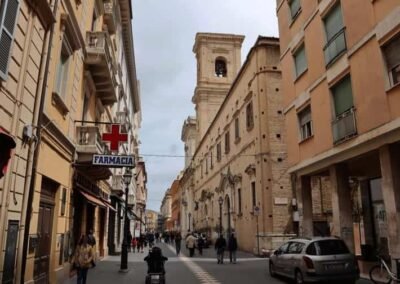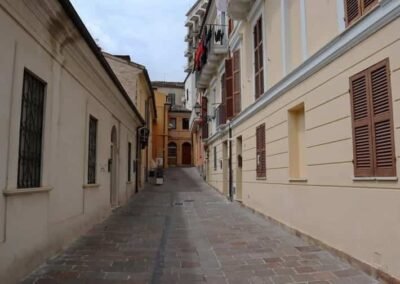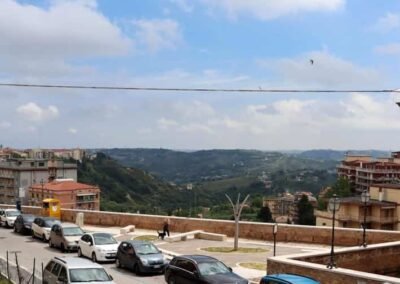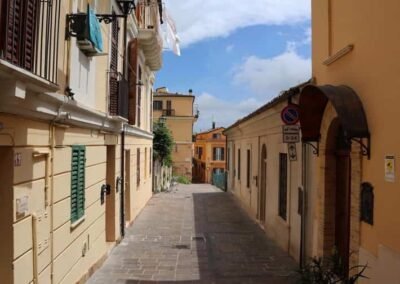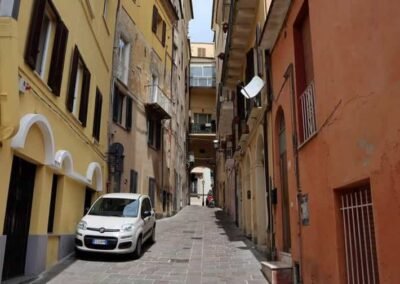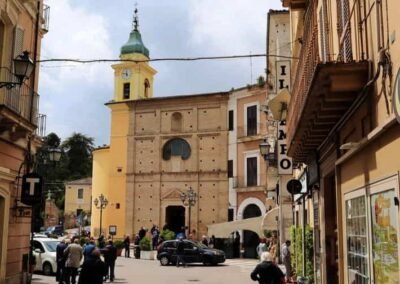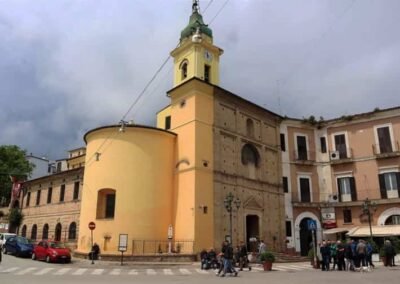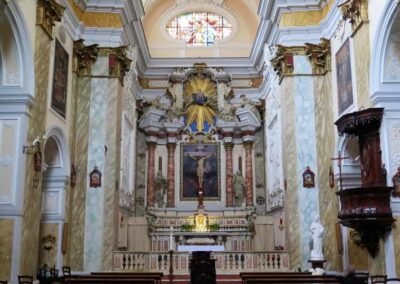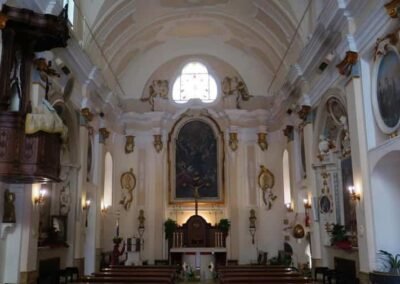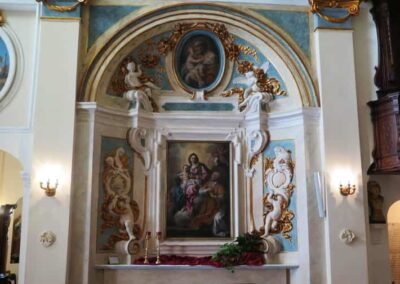HOME
THE REGIONS OF ITALY
PLACES IN ITALY
Italy in Photos
[language-switcher]
Piazzetta Teatro Mario Zuccarini, Via Arniense, 66100 Chieti, Italy (May 2019)
Chieti
Chieti, a historic city located in the Abruzzo region of central Italy, is renowned for its rich cultural heritage, architectural beauty, and picturesque landscapes. As the capital of the province of Chieti, this city offers a captivating blend of historical significance and modern vibrancy. Chieti’s history stretches back over two millennia, with its roots traced to ancient times. Originally known as Teate, the city was an important centre during the Roman era. Evidence of its Roman past is still visible today, including remnants of ancient walls, ruins, and the well-preserved Roman theatre. The city’s historical layers reveal its evolution through various epochs, including Byzantine, Medieval, and Renaissance periods. One of Chieti’s most significant historical landmarks is the Roman Theatre, which dates to the 1st century AD. This impressive structure showcases the city’s prominence during Roman times and continues to be a focal point of archaeological interest. The National Archaeological Museum of Abruzzo, housed in the 16th-century Villa Frigerj, further enriches visitors’ understanding of Chieti’s ancient past with its extensive collection of artifacts. Chieti is characterized by its diverse architectural styles, reflecting its long and varied history. The city’s skyline is dominated by the striking Chiesa di San Giustino, a Romanesque church with intricate medieval details and a serene ambiance. The city’s historic center features narrow, cobbled streets lined with charming buildings that showcase a blend of Renaissance and Baroque architecture.
Another notable architectural gem is the Cathedral of San Giustino, which stands as a testament to the city’s religious heritage. This cathedral, originally founded in the 8th century, has undergone several reconstructions over the centuries, resulting in a structure that combines Romanesque and Gothic elements. Its interior is adorned with beautiful artworks and religious relics. Today, Chieti combines its historical allure with a vibrant modern lifestyle. The city is known for its lively cultural scene, including festivals, art exhibitions, and music events. Piazza Vittorio Emanuele II, the central square, is a hub of activity, offering cafes, shops, and restaurants where locals and visitors can enjoy the city’s relaxed atmosphere. Chieti’s location in the Abruzzo region also provides access to stunning natural landscapes. The nearby Majella National Park offers opportunities for hiking, nature walks, and outdoor activities, allowing visitors to experience the natural beauty of the region.
Chieti is also an educational centre, home to the University of Chieti-Pescara, which attracts students from across Italy and beyond. The university contributes to the city’s dynamic and youthful energy, fostering a spirit of innovation and academic excellence.Chieti is a city that seamlessly integrates its rich historical heritage with contemporary life. Its architectural landmarks, cultural events, and natural surroundings make it a compelling destination for those interested in exploring Italy’s diverse and storied past while enjoying modern Italian life.
Worth a Visit
In the historic heart of Chieti, in the district once known as “Terranova”, stands the Church of Sant’Antonio Abate, a remarkable example of how centuries of devotion, architecture, and civic life intertwine. With origins tracing back to the late Middle Ages, the church was part of a larger complex that originally included a monastery and a hospital. These institutions were managed by the Antonian Order of Vienne, a religious community devoted to caring for the sick, particularly those afflicted by ergotism, also known as “St. Anthony’s Fire.” One of the most striking features of the church is its stone portal, dated 1375, carved by the master craftsman Angelo di Pietro. This Gothic masterpiece is richly decorated with twisted columns, deeply recessed arches, and a lunette fresco from the 16th century, framed by two crouching stone lions.
Nestled at the junction of Via Arniense and the end of Corso Marrucino, the Piazzetta Teatro Mario Zuccarini stands as a refined urban space rich with layers of Chieti’s heritage. Once the site of a bustling fish and meat market, this fan-shaped esedra reflects a classical sensibility, a semi-circular colonnade of Doric columns shielding the former vendor stalls. Originally an open marketplace serving daily commerce, the exedra’s architectural form evokes the ancient Roman forum, a nod to the city’s deep historical roots. By the 19th century, this marketplace underwent significant restoration, embracing the neoclassical aesthetics typical of that era and transforming physically and symbolically into a refined public square.
Perched on a gentle hill in the heart of Chieti, the Cathedral of San Giustino, also known as Cattedrale di San Giustino, is not just a place of worship but a living chronicle of the city’s changing history and artistic heritage. Founded in the 8th century atop the ruins of a pagan temple, the cathedral was rebuilt in 842 AD by Bishop Teodorico I, following the destruction wrought by Charlemagne’s forces. This makes it one of the oldest ecclesiastical structures in Abruzzo. The cathedral’s striking bell tower reflects centuries of architectural evolution. Its sturdy stone base dates from the 11th century, the next two floors were added in 1335 by Bartolomeo di Giacomo, and the octagonal belfry and crowning spire were completed by Antonio da Lodi in 1498.
Located at the heart of Chieti’s historic centre lies Piazza G.G. Valignani, a charming square shaped by centuries of urban transformation and noble legacy. Known historically as Largo del Pozzo, the square’s name acknowledges an ancient well, a visible sign of Chieti’s longstanding relationship with water, echoed by an extensive Roman-era hydraulic network beneath the surface. In the Middle Ages, Piazza Valignani was overshadowed by dense urban fabric, known as Largo del Teatro. But by the late 19th and early 20th centuries, ambitious urban redevelopment projects reshaped the medieval layout. Corso Marrucino was extended and widened, opening sightlines across the square and creating a welcoming filter between the upper city and the lower historic areas. Architecturally, the square is framed by several notable buildings. The Archbishop’s Palace (Palazzo Arcivescovile) features a 15th-century merloned brick tower commissioned by Bishop Colantonio Valignani, along with an elegant marble staircase added in the late 18th century. more monumental buildings.
Corso Marrucino is the beating heart of Chieti’s historic centre, a graceful main street that combines centuries of history with the rhythm of contemporary city life. Named after the ancient Marrucini people who once inhabited the area, this elegant thoroughfare runs through the spine of the old town, linking its most important squares, churches, and civic buildings. In its current form, Corso Marrucino dates largely from 19th-century urban redesigns, when the medieval street plan was straightened and widened to create a more monumental, accessible route. Yet traces of its earlier history remain in the façades, arcades, and occasional narrow side alleys that lead off into older parts of the city. Formerly called Corso Galiani, it was renamed toward the end of the 19th century to honour Chieti’s ancient roots.
Photo Gallery of Walk 1 in Chieti – Via Alessandro Valignani to Piazza S. Giustino
Approximately 0.90 km – 0.56 miles
The walk starts in Via Alessandro Valignani – Via Sant’Antonio Abate – Sant’Antonio Abate, Via Sant’Antonio Abate – Piazza Giacomo Matteotti – Via Papa Giovanni XXIII – Via Giuseppe Mezzanotte – Piazza Malta – Via Arniense – Piazzetta Teatro “Mario Zuccarini” – ex Pescheria, Via Arniense – Piazza Ercole Rocchetti – Largo Cavallerizza – Piazza S. Giustino – Cattedrale di San Giustino, Piazza S. Giustino – Piazza S. Giustino
Photo Gallery of Walk 2 in Chieti – Piazza S. Giustino to Via Smeraldo Vincenzo Zecca
Approximately 0.80 km – 0.50 miles
The walk starts in Piazza S. Giustino – Cattedrale di San Giustino, Piazza S. Giustino – Piazza S. Giustino – Corso Marrucino – Piazza GG Valignani – Corso Marrucino – Piazza Gian Battista Vico, Lago G.B. Vico – Corso Marrucino – Via Cauta – Piazza Trento e Trieste – Parrocchia Santissima Trinità, Piazza Trento e Trieste – Via Smeraldo Vincenzo Zecca
COPYRIGHT © 2018-2025 ITALY IN PHOTOS - ALL RIGHTS RESERVED
